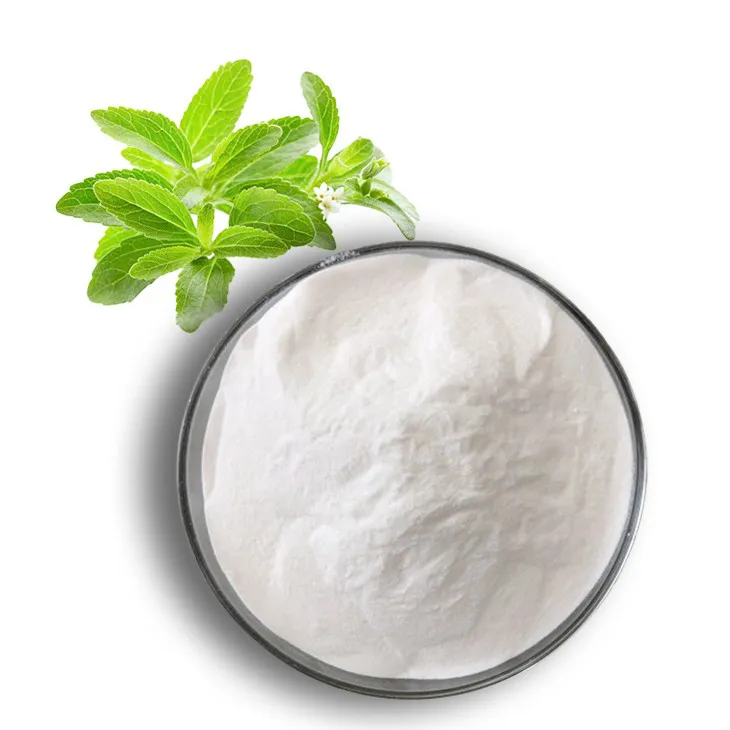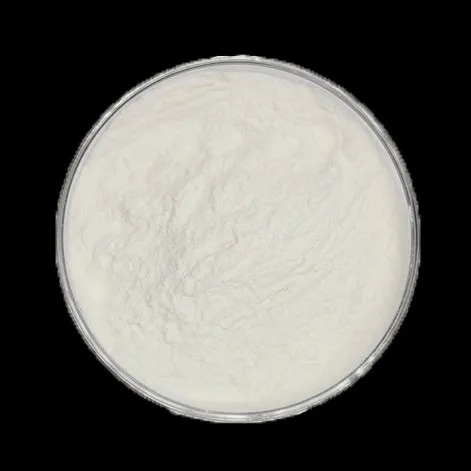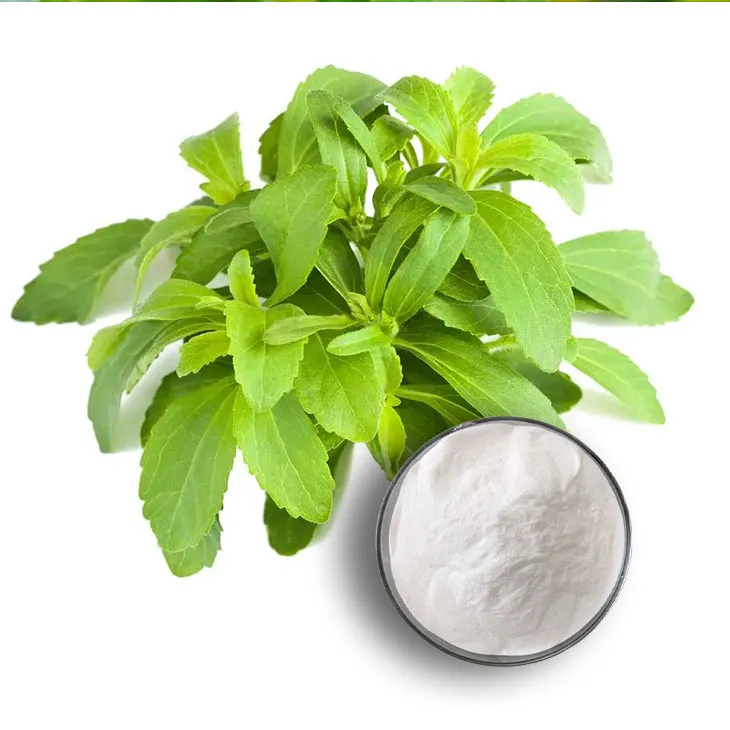- 0086-571-85302990
- sales@greenskybio.com
How to extract stevia extract from plants?
2024-11-28

1. Introduction to Stevia and its Importance
Stevia is a remarkable plant that has gained significant popularity in recent years, mainly due to the Stevia Extract it yields. Stevia Extract is a natural sweetener that is increasingly being used as an alternative to traditional sugar. It is highly sought - after because it offers a sweet taste without the caloric content associated with regular sugar. This makes it a preferred choice for those who are health - conscious or have dietary restrictions such as diabetes.

2. Cultivation of Stevia Plants
The first step in obtaining Stevia Extract is the careful cultivation of stevia plants.
2.1. Soil Requirements
Stevia plants thrive in well - drained soil. The soil should be rich in organic matter. A soil with a slightly acidic to neutral pH range (around 6.5 - 7.5) is ideal for stevia growth. It is important to ensure that the soil is free from contaminants and has good water - holding capacity.
2.2. Climate and Sunlight
Stevia plants prefer warm and sunny climates. They require at least 6 - 8 hours of direct sunlight per day. However, they can also tolerate some shade. In terms of temperature, they grow well in temperatures between 20 - 30°C (68 - 86°F). Extreme cold or heat can be detrimental to their growth.
2.3. Watering
Proper watering is crucial for stevia plants. They need regular watering, especially during dry periods. However, over - watering should be avoided as it can lead to root rot. A good practice is to water the plants deeply but less frequently, allowing the soil to dry out slightly between waterings.

3. Harvesting of Stevia Leaves
When the stevia plants reach maturity, it is time to harvest the leaves. The timing of the harvest is critical as it can affect the quality and quantity of the stevia extract.
3.1. Determining Maturity
Stevia plants are usually ready for harvest when they are around 3 - 4 months old. At this stage, the leaves are fully developed and have reached their maximum sweetness. One way to determine maturity is by observing the color of the leaves. Mature stevia leaves are a deep green color.
3.2. Harvesting Techniques
The leaves are typically hand - picked to ensure that only the healthy and mature leaves are harvested. This is a labor - intensive process but is necessary to obtain high - quality stevia extract. Care should be taken not to damage the plant during the harvesting process.

4. Pretreatment of Stevia Leaves
Once the leaves are harvested, they need to be pretreated before extraction. Pretreatment helps to improve the efficiency of the extraction process and the quality of the final extract.
4.1. Blanching
Blanching is an important pretreatment step. It involves briefly immersing the stevia leaves in hot water or steam. The main purpose of blanching is to inactivate certain enzymes in the leaves that could affect the quality of the extract. Enzymes can cause degradation of the sweet compounds in the leaves during the extraction process. Blanching also helps to clean the leaves and remove any surface contaminants.
4.2. Drying
After blanching, the leaves may be dried. Drying can be done either naturally in the sun or using artificial drying methods such as in a dehydrator or an oven at a low temperature. Drying helps to reduce the moisture content of the leaves, which is beneficial for storage and further processing. However, it is important to ensure that the drying process does not cause over - drying, which could lead to a loss of the sweet compounds.

5. Extraction Methods
There are several methods available for extracting stevia extract from the pretreated leaves.
5.1. Water Extraction
- Water extraction is a more natural and environmentally friendly approach. It involves soaking the stevia leaves in water for a certain period of time. The sweet compounds in the leaves are soluble in water and will gradually dissolve into the water.
- However, water extraction has some drawbacks. It may require more complex purification steps later. This is because water can also extract other substances from the leaves in addition to the sweet compounds, such as proteins, tannins, and pigments. These impurities need to be removed to obtain a pure stevia extract.
- The extraction time and temperature can also affect the efficiency of water extraction. Generally, a longer extraction time and a slightly elevated temperature can increase the yield of the sweet compounds, but care must be taken not to degrade the compounds due to excessive heat.
5.2. Organic Solvent Extraction
- Using organic solvents can be more efficient in extracting the sweet compounds from stevia leaves. Common organic solvents used for stevia extraction include ethanol and methanol. These solvents have a higher affinity for the sweet compounds and can extract them more selectively compared to water.
- However, organic solvent extraction requires strict safety measures. Organic solvents are often flammable and toxic, and proper handling and ventilation are essential to ensure the safety of the workers and the environment. After extraction with an organic solvent, the solvent needs to be removed completely from the extract to obtain a pure stevia extract.
- The choice of organic solvent and the extraction conditions (such as solvent - to - leaf ratio, extraction time, and temperature) need to be optimized to achieve the highest yield and quality of the stevia extract.
6. Concentration of the Extract
After the extraction process, the resulting liquid is concentrated to obtain a more potent stevia extract.
6.1. Evaporation
Evaporation is a common method for concentrating the stevia extract. This can be done using heat to vaporize the solvent (in the case of solvent - based extraction) or water (in the case of water extraction). The evaporated solvent or water is removed, leaving behind a more concentrated stevia extract. However, care should be taken not to over - heat the extract during evaporation as this could cause degradation of the sweet compounds.
6.2. Reverse Osmosis
Reverse osmosis is another technique that can be used for concentration. It is a membrane - based process where pressure is applied to force the solvent (usually water) through a semi - permeable membrane, leaving behind the concentrated stevia extract. Reverse osmosis has the advantage of being able to operate at lower temperatures compared to evaporation, which can help to preserve the quality of the sweet compounds.
7. Further Processing and Forms of Stevia Extract
The concentrated stevia extract can be further processed into different forms for various applications.
7.1. Powder Form
To obtain the powder form, the concentrated extract is dried further. This can be done using techniques such as spray drying or freeze - drying. The powder form of stevia extract is convenient for use in dry products such as baking mixes, powdered drinks, and tabletop sweeteners.
7.2. Liquid Concentrate
The stevia extract can also be left in liquid concentrate form. Liquid concentrate is often used in liquid products such as beverages and syrups. It can be easily added to these products to provide a sweet taste without the need for additional processing.
8. Quality Control and Assurance
Throughout the extraction and processing of stevia extract, quality control and assurance are essential.
8.1. Purity Testing
Tests are carried out to ensure the purity of the stevia extract. This includes testing for the presence of impurities such as heavy metals, pesticides, and other contaminants. High - performance liquid chromatography (HPLC) is often used to analyze the composition of the extract and determine the purity of the sweet compounds.
8.2. Sweetness Measurement
The sweetness of the stevia extract needs to be accurately measured. This is important for ensuring that the final product has a consistent and acceptable level of sweetness. There are various methods for measuring sweetness, such as sensory evaluation by a panel of tasters or using analytical instruments to measure the concentration of the sweet compounds.
9. Conclusion
Extracting stevia extract from plants involves a series of carefully coordinated steps, from cultivation to final processing. Each step plays an important role in obtaining a high - quality stevia extract. As the demand for natural sweeteners continues to grow, the extraction of stevia extract is likely to become even more refined and optimized in the future.
FAQ:
1. What are the main steps in extracting stevia extract from plants?
The main steps include carefully cultivating and monitoring the stevia plants. When they reach maturity, the leaves are picked. Then the leaves are pre - treated (such as blanching), crushed or milled. After that, extraction is carried out using methods like water extraction or solvent extraction. Finally, the resulting liquid is concentrated to obtain the stevia extract.
2. Why is blanching the leaves an important step?
Blanching the leaves is important because it can inactivate certain enzymes that might affect the quality of the extract.
3. What are the advantages and disadvantages of water extraction?
The advantage of water extraction is that it is a more natural and environmentally friendly approach. However, its disadvantage is that it may require more complex purification steps later.
4. What safety measures are needed when using organic solvents for extraction?
When using organic solvents for extraction, strict safety measures are required. This may include proper ventilation to avoid the build - up of solvent vapors, wearing appropriate protective equipment such as gloves and goggles, and ensuring proper storage and handling of the solvents to prevent spills and exposure.
5. How is the stevia extract finally obtained after extraction?
After extraction, the resulting liquid is concentrated to obtain a more potent stevia extract. This extract can be further processed into different forms such as powder or liquid concentrate for various applications.
6. Can the extraction method affect the quality of stevia extract?
Yes, the extraction method can affect the quality of stevia extract. For example, different extraction methods may extract different compounds or affect the purity of the final product. Water extraction may leave more impurities compared to solvent extraction, which may require more purification steps but can result in a higher - quality extract in terms of purity.
Related literature
- Stevia rebaudiana: Its Botany, History of Use, Metabolism, and Toxicology"
- "Advances in Stevia Extraction and Purification Technologies"
- "The Chemistry and Technology of Stevia Extract Production"
- ▶ Hesperidin
- ▶ citrus bioflavonoids
- ▶ plant extract
- ▶ lycopene
- ▶ Diosmin
- ▶ Grape seed extract
- ▶ Sea buckthorn Juice Powder
- ▶ Beetroot powder
- ▶ Hops Extract
- ▶ Artichoke Extract
- ▶ Reishi mushroom extract
- ▶ Astaxanthin
- ▶ Green Tea Extract
- ▶ Curcumin Extract
- ▶ Horse Chestnut Extract
- ▶ Other Problems
- ▶ Boswellia Serrata Extract
- ▶ Resveratrol Extract
- ▶ Marigold Extract
- ▶ Grape Leaf Extract
- ▶ blog3
- ▶ blog4
-
Manufacturers of Euphrasia Extract.
2024-11-28
-
Chinese peppermint oil powder factories.
2024-11-28
-
The best green tea extract on the market.
2024-11-28
-
Nature's Bounty Okra Extract.
2024-11-28
-
Chinese Oyster Peptide Powder Factories.
2024-11-28
-
The best organic L - carnitine.
2024-11-28
-
Tormentil Extract
2024-11-28
-
Natural grape seed extract
2024-11-28
-
Konjac Powder
2024-11-28
-
Horse Chestnut Extract
2024-11-28
-
Pomegranate Extract
2024-11-28
-
Diosmin
2024-11-28
-
Saponin Extract
2024-11-28
-
Astaxanthin
2024-11-28
-
Aguaje Extract
2024-11-28
-
Tinospora cordifolia extract
2024-11-28





















